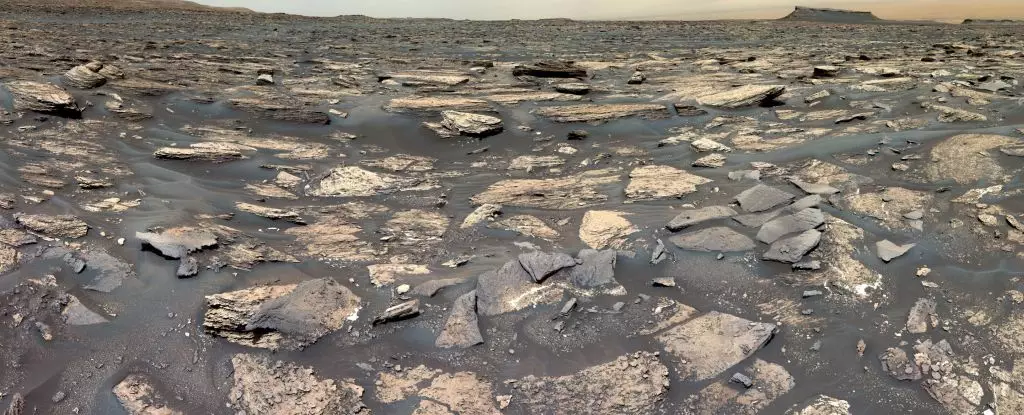The findings from rocks scrutinized by the Curiosity rover on Mars have revealed intriguing clues about the conditions that may have existed billions of years ago in the Gale Crater. The presence of manganese oxide in significant quantities in these rocks suggests that Mars may have once harbored habitable environments similar to those found on Earth. This discovery has raised questions about the possible mechanisms involved in the formation of manganese oxide on Mars and the implications for the planet’s past habitability.
The discovery of manganese oxide on Mars is significant because this mineral is commonly found in lakes on Earth, where highly oxidizing conditions facilitate its formation in the presence of oxygen. The abundance of manganese oxide in rocks on the Gale Crater indicates that similar conditions may have existed on Mars when the crater was filled with water in ancient times. However, the lack of conclusive evidence for life on Mars and uncertainties about the production of oxygen in the planet’s atmosphere make the presence of manganese oxide a puzzling discovery.
Formation of Manganese Oxide on Mars
Researchers have speculated about the possible mechanisms for the precipitation of manganese oxide in the Gale Crater lake. The analysis conducted by Curiosity’s ChemCam revealed the composition of the manganese oxide, leading to the conclusion that highly oxidizing conditions were necessary for its formation. The most likely scenario proposed by the researchers involves the precipitation of manganese oxides along a lakeshore in the presence of an oxygen-rich atmosphere. This suggests the presence of a long-lived and habitable lake environment in the ancient Gale Crater on Mars.
The presence of manganese oxide in sedimentary rocks on Mars raises the tantalizing prospect of searching for traces of ancient life on the planet. Microbe-mediated oxidation could have left biosignatures and organics in the manganese-bearing rocks, providing valuable insights into the past habitability of Mars. The Perseverance rover, currently exploring a dried-up delta environment on Mars, may have the opportunity to investigate these rocks for evidence of ancient life.
The discovery of manganese oxide on Mars offers valuable insights into the planet’s past habitable conditions and the potential for ancient life. The presence of this mineral in rocks on the Gale Crater suggests that Mars may have once harbored environments similar to those found on Earth. Further research and exploration are needed to unravel the mysteries surrounding the formation of manganese oxide on Mars and its implications for the search for signs of ancient life on the red planet.


Leave a Reply